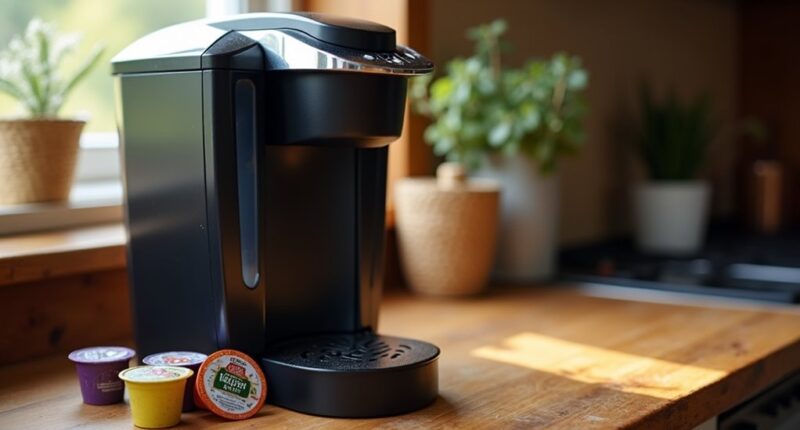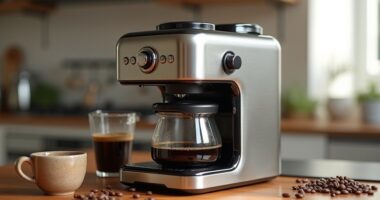Keurig 2.0 was discontinued because it ticked off a lot of coffee lovers with its strict pod limits, making you feel like you were stuck in a single-flavor coffee prison! Average ratings were pretty dismal, too, hovering around 2.5 stars. People hated not being able to use their favorite K-Cups, and sales tanked as a result. So, Keurig had to make a change, and if you want to know what happened next, stick around!
At a Glance
- The Keurig 2.0 faced significant consumer backlash due to its restriction on non-Keurig K-Cups, frustrating loyal customers.
- A poorly received pod authentication system led to negative reviews and a decline in brewing flexibility.
- The machine’s sales dropped by 12%, indicating a substantial loss of consumer interest and trust.
- Financial struggles were exacerbated by increased competition and a rise in demand for eco-friendly coffee options.
- Strategic missteps, including the introduction of DRM, prompted Keurig to acknowledge mistakes and discontinue the problematic model.
Consumer Backlash and Negative Reception
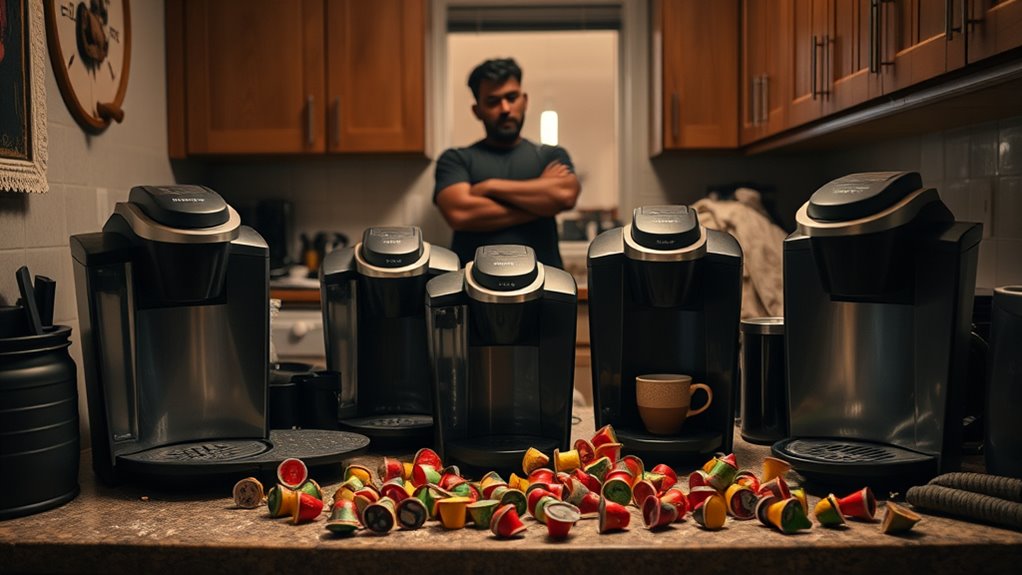
When the Keurig 2.0 hit the market, you could practically hear the collective groan from coffee lovers everywhere.
Imagine unboxing your shiny new machine, only to find out it blocks your beloved K-Cups! Talk about consumer frustration! It felt like corporate greed at its finest, leaving many feeling cheated out of their investment.
Negative reviews flooded in, with averages stuck between 2 and 2.9 out of 5 stars. People returned their machines, demanding refunds. The uproar was real, and you weren’t alone in feeling betrayed.
Keurig’s misstep turned their brewers into a symbol of what happens when companies forget their loyal fans. The situation underscored the importance of compatibility with pods, as many consumers were left wanting more options.
Technical Restrictions and DRM Controversy
While you might’ve been excited to brew your favorite cup of coffee with the Keurig 2.0, the reality quickly set in that this machine had a few tricks up its sleeve—tricks that weren’t exactly consumer-friendly.
The pod authentication system made sure only Keurig-approved pods could be brewed, leaving you frustrated when your favorite third-party options were tossed aside.
The pod authentication system locked you out of your beloved third-party options, leaving coffee lovers feeling frustrated and betrayed.
Many coffee lovers felt trapped, like being stuck in a bad relationship. Sure, some clever folks found hacks to trick the machine, but shouldn’t it just brew coffee?
This DRM drama only fueled more consumer frustration and made you question Keurig’s loyalty to its fans. The brewing experience was compromised, as many users sought to enjoy the best keurig coffee without limitations.
Financial Impact and Sales Decline
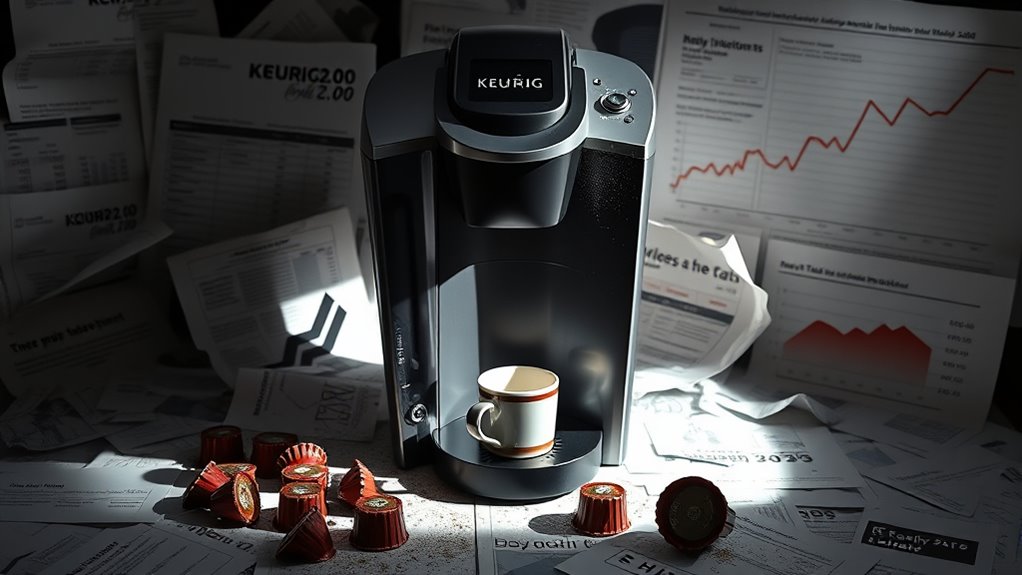
Although you might’ve loved the idea of brewing coffee with the Keurig 2.0, the reality was a bit of a letdown for the company’s finances. Brewer sales dropped 12%, leaving them with only 4.5 million units sold. Ouch!
That 18% decline in net sales? Yeah, it hurt. The financial projections weren’t looking bright, and holiday sales flopped.
With cheaper non-Keurig pods flooding the market, their revenue trends took a nosedive. Plus, environmental concerns didn’t help either. You can imagine the coffee lovers’ frustration! Many turned to alternatives like non-dairy creamers for their coffee, further impacting Keurig’s appeal.
It became clear—Keurig needed to rethink its strategy or face more bitter brews ahead.
Strategic Missteps and Corporate Response
Keurig really shot itself in the foot with the 2.0, didn’t it? The introduction of restrictive DRM locked out non-Keurig K-Cups, leaving many of you frustrated. It felt like corporate greed, right? The backlash was real, and even the CEO admitted they messed up. They promised to listen and reintroduce the My K-Cup to rebuild consumer trust. Savoring the rich flavors of ground coffee can be difficult when options are limited. Check out this table to see how they tried to fix things:
| Strategy | Impact |
|---|---|
| Apologies from Leadership | Recognized corporate accountability |
| Reintroducing My K-Cup | Aimed to regain consumer trust |
| Promotions | Attempted to soften backlash |
| Automatic Delivery | Tried to lock in customers |
| Learning from Mistakes | Shifted future strategies |
It’s a lesson in listening to loyal fans!
Market Reactions and Competitive Landscape
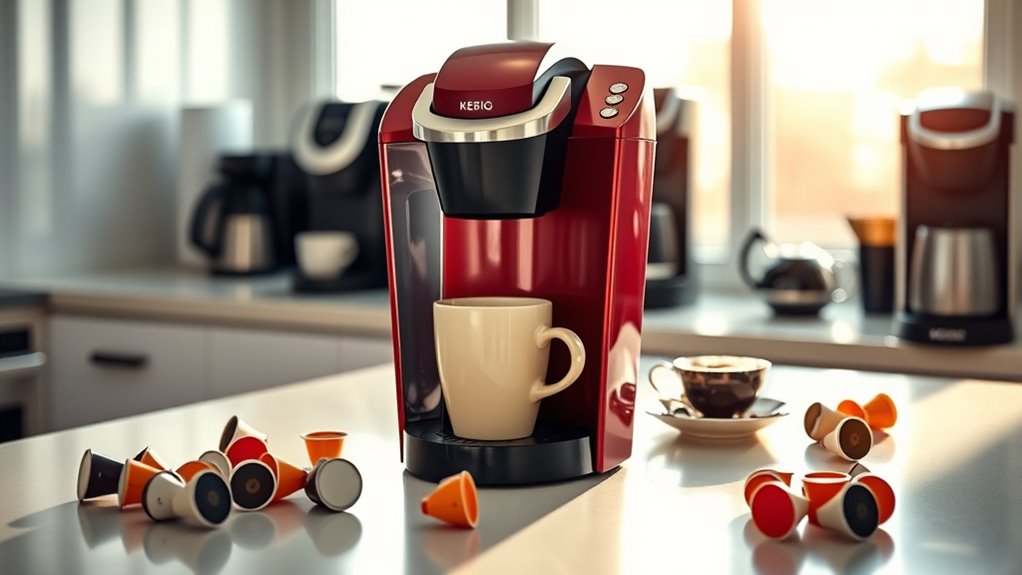
When you think about the fallout from the Keurig 2.0, it’s pretty wild how a single machine could shake up the entire coffee world.
The backlash was swift, with customers venting about the DRM tech blocking their beloved unlicensed K-Cups. Talk about a buzzkill!
Competitors jumped in, offering “hacked” solutions and alternative pods that really catered to consumer preferences.
While Keurig held onto a big chunk of the market, it faced serious challenges.
Folks wanted flexibility and choice, and the market dynamics shifted, making it clear: you can’t mess with coffee lovers and expect to stay on top!
Additionally, many consumers began exploring eco-friendly coffee options as they sought sustainable alternatives to traditional pods.
